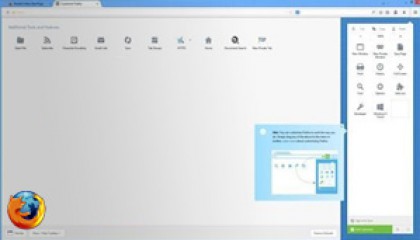Internet Watch Foundation report highlights new abuse of online technology
Criminals intent on distributing images of children being sexually abused are finding new ways of exploiting legitimate online technology, according to the Internet Watch Foundation’s (IWF) 2011 Annual Report launched today (26 March 2012).
Criminals are ‘disguising’ websites to appear as if they host only legal content. However, if an internet user follows a predetermined digital path which leads them to the website, they will see images and videos of children being sexually abused.
This trend has been identified by analysts at the IWF who are experts at tracking and tracing child sexual abuse content. During 2011 this technique was seen nearly 600 times.
Chief Executive Susie Hargreaves said:
“We received reports to our Hotline by online users who have stumbled across these sites. They pose challenges because when the website is accessed directly, only legal content appears.”
“However, the reports we receive by the public can be quite detailed and these reporters were sure of what they had seen. Our analysts investigated further and discovered a legitimate web development technique was being used to disguise the website from all those who had not followed a particular digital path to access it.”
“Clearly, ordinary online users had still found this content and we’ve been working with analysts in our sister Hotlines and with our Members to tackle this issue.”
This legitimate web development technique is commonly used, for example, on shopping websites. There are several reasons why this method is used. Firstly, it masks the criminal website from those who have not followed the correct digital path. Secondly, it means that a commercial child sexual abuse business may be able to acquire legitimate business services if the website appears to host legal content when accessed directly – essentially tricking companies into providing their services for what is actually a criminal enterprise.
These disguised websites have not yet been encountered on UK servers but the IWF is working with its Members – the online industry -and other Hotlines around the world to effectively tackle this trend.
Quicker removal times
As criminals exploit new ways of hosting this content, the online industry is getting quicker at removing it from its networks. Very little of this content is hosted on UK networks and when it is, it’s removed typically within 60 minutes. None of the disguised websites were found hosted within the UK.
Ms Hargreaves continued:
“The IWF can, for the second year running, report successes with its work to speed up the time it takes to remove images and videos of online child sexual abuse.
“In particular, those companies and organisations which make up our membership are 40% quicker at removing this criminal content when it’s hosted outside of the UK than non-Members. However, our work continues with all those involved with the aim of eliminating online child sexual abuse content.”
During 2010 the IWF challenged itself to speed up the removal of child sexual abuse content hosted outside of the UK. This content is more likely to feature younger children, and more likely to show sexual activity between adults and children, rape and sexual torture.[i]
Around half of all child sexual abuse images and videos hosted outside of the UK are removed in 10 days. In 2008 they typically stayed available for more than one month.
IWF Members are able to remove child sexual abuse content around 40% quicker than non-members. When child sexual abuse content is hosted by one of our Members, most (85%) is removed within 10 days and almost all (95%) is removed within 13 days. This is due to the simultaneous alert service we are able to provide to Members.
Identifying new victims
IWF analysts are able to identify new images of sexual abuse and subsequently alert police to children who may not be known to them but are potentially at immediate risk. Three children who were being sexually abused were rescued during 2011 as a result of sharing intelligence with the Child Exploitation and Online Protection (CEOP) Centre.
One child was traced to Sweden – she was being abused by a relative who then put the images online.
Another two were traced within the UK. Both were rescued from their abusers.
Ms Hargreaves said:
“Since we began working with CEOP to help identify new victims in 2010, we’ve aided the rescue of seven children in total. For the analysts who do this work, there is no better result.
“The IWF is now in its 16thyear and has shared some incredible successes with the online industry in tackling some of the worst content on the internet. However, we will not get complacent. We will remain dedicated to the expeditious removal of child sexual abuse content wherever it is hosted.”
The 2011 Annual Report can be downloaded from Monday 26 March at www.iwf.org.uk or for a low resolution version, email media@iwf.org.uk to request a copy.

















